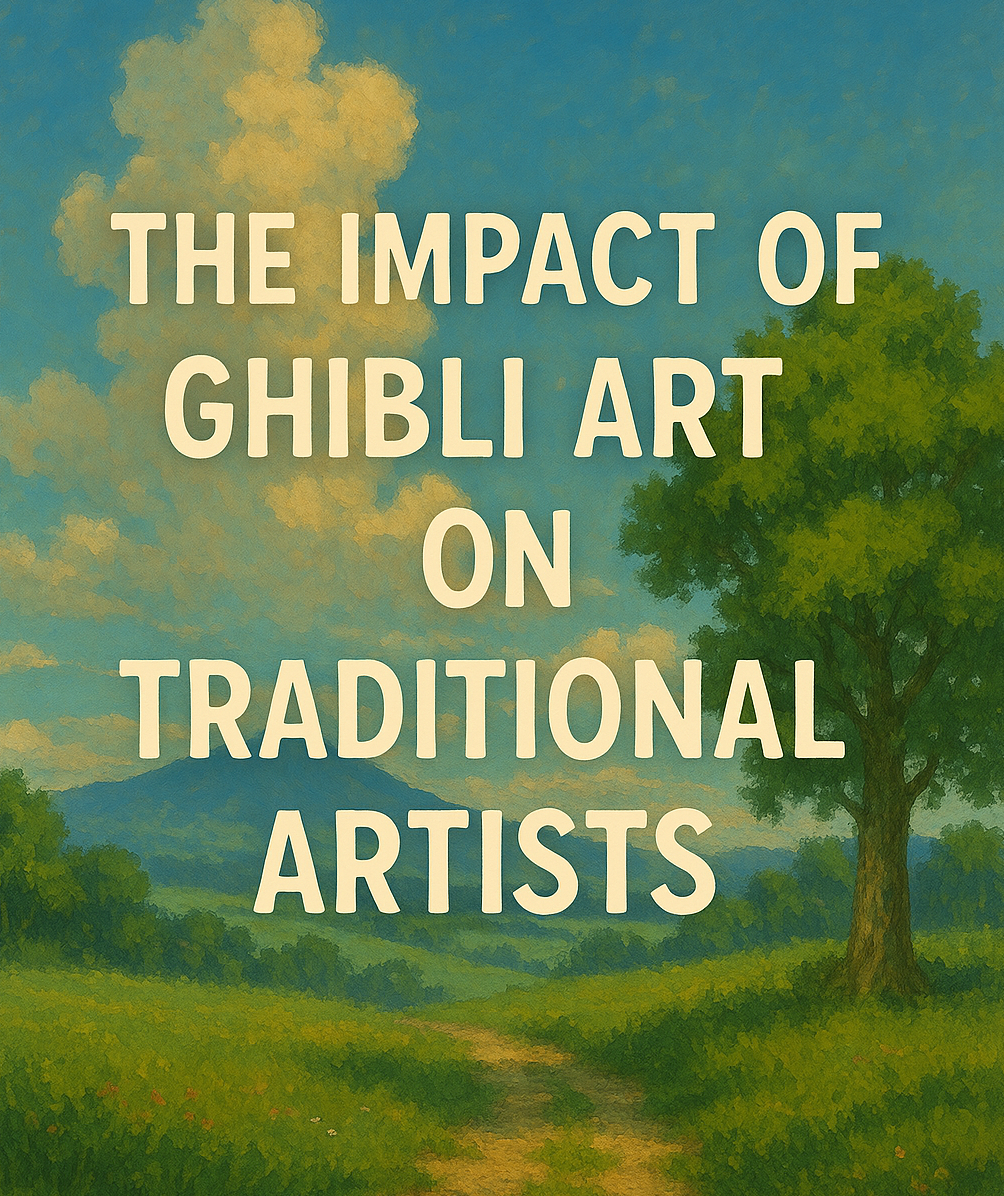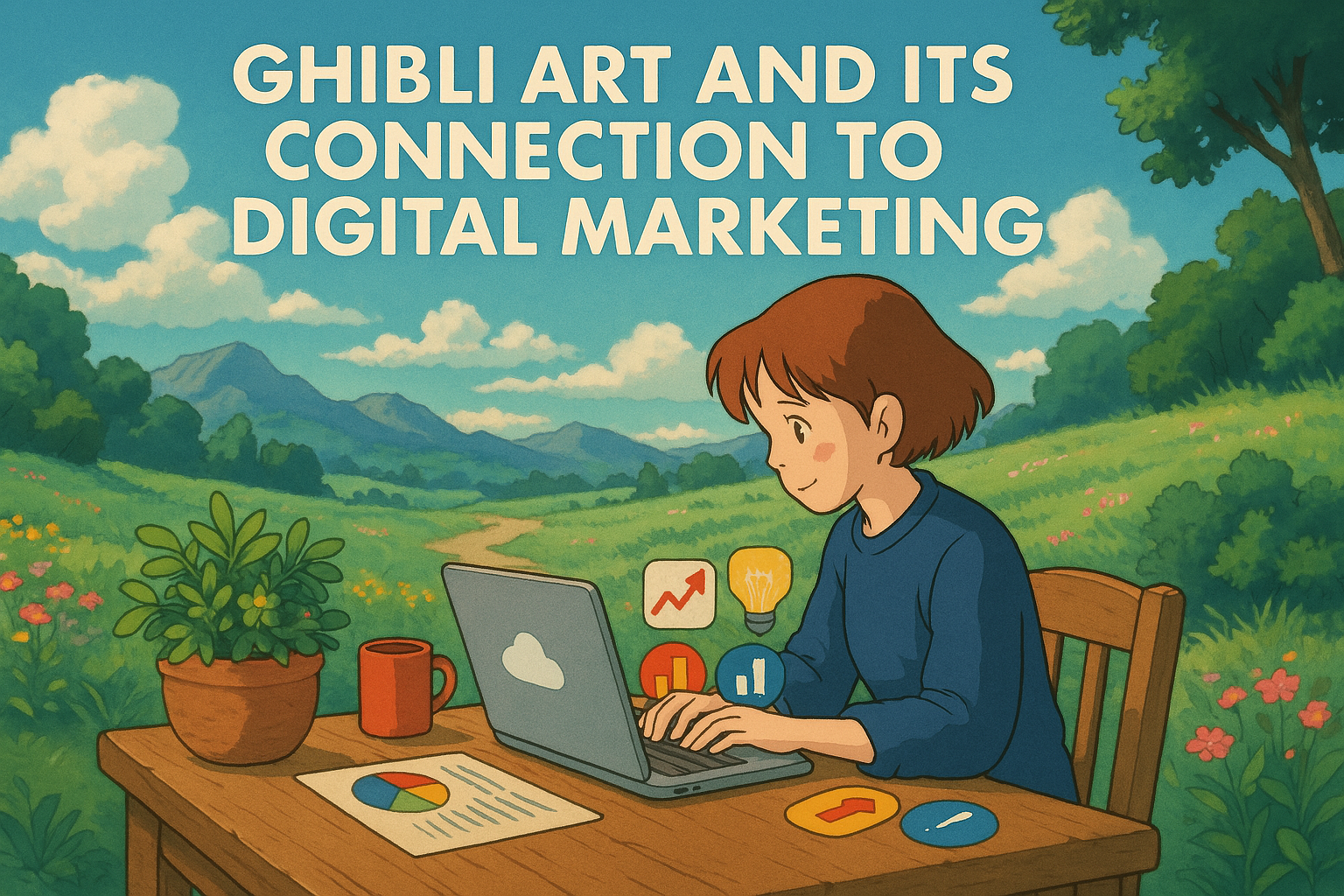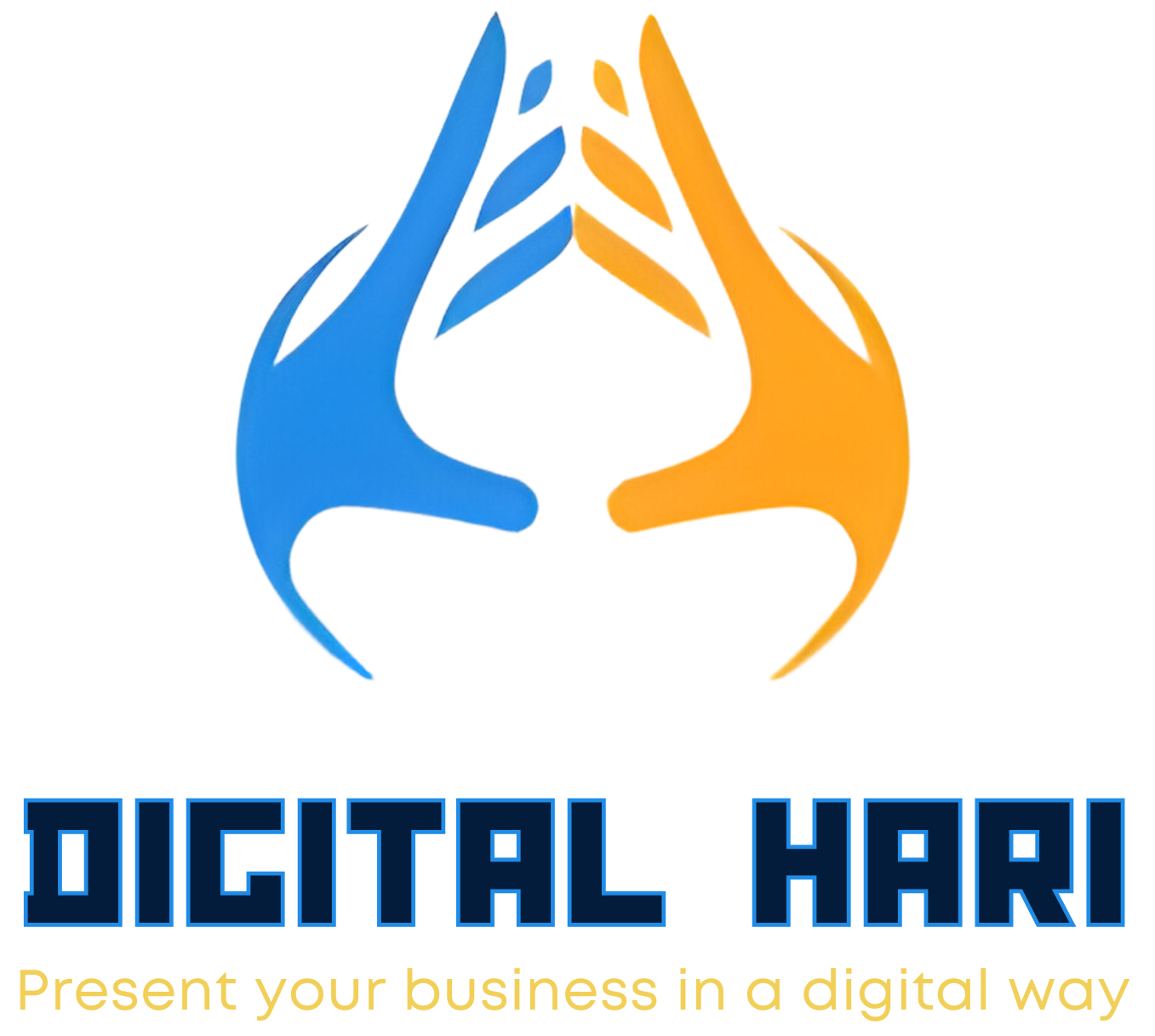Introduction: The Ghibli Art Phenomenon
From Instagram to Twitter, a new digital trend has taken over the internet—turning real-life photos into Ghibli Art. Inspired by the breathtaking aesthetics of Studio Ghibli, this art style transforms everyday images into dreamlike, hand-painted illustrations reminiscent of movies like Spirited Away, My Neighbor Totoro, and Howl’s Moving Castle.
But why is this trend exploding? Is it a celebration of creativity or a threat to traditional artists? More importantly, how does this connect to the digital revolution and the rise of AI-generated art?
Let’s dive deep into this phenomenon and explore its impact on artists, designers, and even digital marketing freelancers in India who thrive on creative content.

What is Ghibli Art?
Ghibli Art refers to an artistic style inspired by Studio Ghibli, the legendary Japanese animation studio known for its rich colors, warm lighting, and nostalgic, hand-painted backgrounds. The beauty of Ghibli-style art lies in its ability to make everyday scenes feel magical and otherworldly.
Recently, AI-powered tools and apps have made it easier for anyone to convert their real-life photos into Ghibli-inspired paintings, leading to a massive surge in popularity across social media platforms.

Why Is Everyone Turning Their Photos Into Ghibli Art?
The rise of Ghibli Art isn’t just a passing trend. Several key factors have contributed to its widespread appeal:
1. Nostalgia and Emotional Connection
Studio Ghibli movies evoke deep emotional connections. The dreamy landscapes, soft light, and hand-drawn details bring a sense of warmth and childhood wonder. Many people are using Ghibli filters and AI art generators to relive those nostalgic moments through their own photos.
2. AI and Digital Tools Are Making It Easier
Previously, creating Ghibli-style artwork required advanced illustration skills. Now, AI-powered tools like Chat GPT, Deepseek AI, Dream AI, and Studio Ghibli filters allow anyone to transform their selfies or landscape photos into Ghibli masterpieces within seconds.
3. Social Media Virality
Platforms like Instagram, TikTok, and Twitter have played a massive role in the spread of this trend. The “before-and-after” transformations of real photos into Ghibli Art captivate audiences, making them perfect for viral content marketing.
4. The Rise of AI-Generated Art
AI has revolutionized the creative industry, enabling users to produce high-quality artwork with minimal effort. AI-generated Ghibli Art is the latest in a long line of automated artistic trends that make creativity accessible to all.

The Impact of Ghibli Art on Traditional Artists
While this trend is exciting for many, traditional artists are divided. Some view it as a creative revolution, while others fear it could diminish the value of hand-drawn illustrations.
Pros for Traditional Artists
✔️ Increased Interest in Art Styles – More people are discovering and appreciating hand-drawn styles.
✔️ New Opportunities – Artists can leverage AI tools to enhance their work and reach wider audiences.
✔️ Monetization Potential – Custom Ghibli-style commissions are in high demand.
Cons for Traditional Artists
❌ Oversaturation of AI Art – AI-generated artwork may overshadow hand-drawn pieces.
❌ Copyright Concerns – Some AI models use existing artwork for training, raising ethical issues.
❌ Reduced Demand for Hand-Painted Art – Clients may prefer AI-created art over hiring professional illustrators.

Ghibli Art and Its Connection to Digital Marketing
Interestingly, this trend isn’t just impacting artists—it’s also influencing SEO freelancers in India and digital marketing freelancers in India who specialize in visual content marketing.
1. Visual Content for Engagement
Ghibli-style images are highly engaging. Marketers and freelancers can use them for social media posts, blog visuals, and advertisements to increase audience interaction.
2. Branding & Storytelling
Businesses can leverage Ghibli Art for storytelling, creating a unique brand aesthetic that appeals to nostalgic and emotionally-driven consumers.
3. SEO for Ghibli Art Trends
SEO experts can capitalize on trending searches like “Ghibli Art generator,” “how to create Ghibli-style art,” and “AI-powered Ghibli filters” to attract organic traffic to their websites.

Is This the Beginning of the End for Traditional Artists?
The rise of AI in art creation raises the inevitable question—will AI replace traditional artists?
The answer is no, but adaptation is key. While AI-generated Ghibli Art is fun and accessible, true creativity and artistic depth still come from human hands.
How Artists Can Adapt
✅ Use AI as a Tool – Instead of fearing AI, artists can use it to speed up workflows and enhance their creativity.
✅ Offer Unique Customization – AI-generated art lacks personal touch—artists can offer custom illustrations with a human element.
✅ Monetize the Trend – Selling custom Ghibli-style commissions or creating tutorials can be a great way to capitalize on the trend.
Final Thoughts: A Balance Between AI and Art
The Ghibli Art trend is a fascinating blend of nostalgia, technology, and creativity. While AI is reshaping the artistic landscape, it cannot replace the heart, soul, and originality of human-made artwork.
For artists, designers, digital marketers, and SEO freelancers in India, this trend presents both opportunities and challenges. The key is to adapt, innovate, and embrace the digital future while preserving the beauty of traditional art.
🚀 What’s your take on AI-generated Ghibli Art? Is it a creative revolution or a threat to artists? Let’s discuss in the comments!

